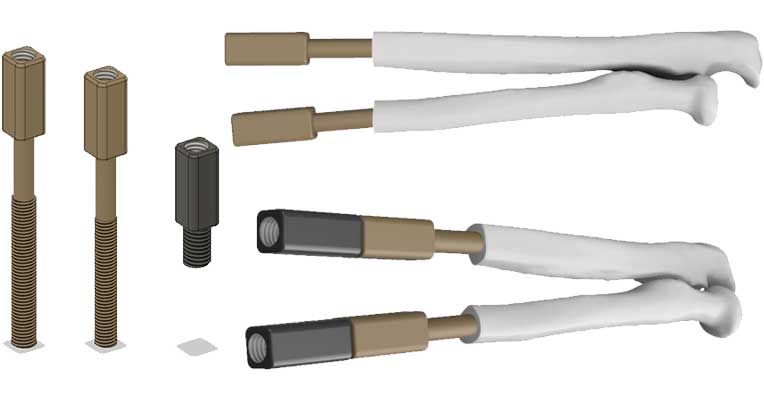Bioengineering Students Win ASTM Award for Innovative Amputation Implant Design

A team of Northeastern University students received an American Society for Testing and Materials International (ASTM) Grant for their design of an implantable osseointegrative pylon for transradial amputations. The award recognizes senior undergraduate and graduate student projects that incorporate ASTM International standards.
A team of Northeastern University seniors and graduate students, including Calli Sipin, MS’25 Bouve; Tobias van Schaick, E’23, bioengineering, and MS’24, Bouve; Ashka Patel, E’24, bioengineering; and Julia Kautz, MS’24, bioengineering, received an ASTM International Grant. They were recognized for their project “An Implantable Osseointegrative Pylon for Transradial Amputation,” which proposes an osseointegrative implant system designed to address the problems posed by traditional socket suspension methods for transradial amputation. Osseointegration is viewed as a solution to these problems as it features direct prosthesis implantation into bone, thereby circumventing issues like volumetric fluctuation of and pain within the residual limb.
The final design consists of a radial and an ulnar implant featuring proximal screw-fit surface modifications that maximize bone ingrowth and distal smooth surfacing to reduce the risk of biofilm production and infection. Additionally, an abutment protrudes through the dermis and can interface with components external to the body, including a replaceable adapter. This component not only creates symmetry between the intact and amputated sides but also reduces the wear on the non-removable implant. By making this product out of polyetheretherketone (PEEK), mechanical properties become customizable by adding infusions of hydroxyapatite and carbon fiber. This customizability protects the fixture components from stress shielding and reduces wear between the permanent and replaceable parts.
Ultimately, this device offers a functional solution to those with contraindications for more traditional solutions to transradial amputation.